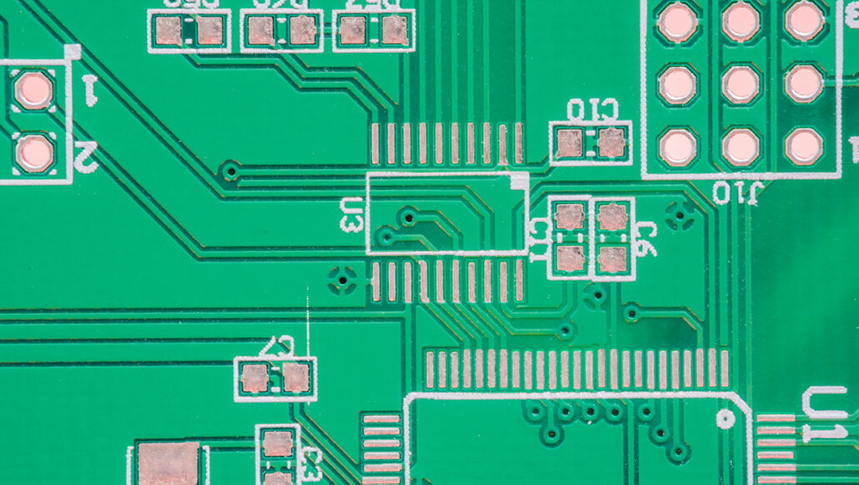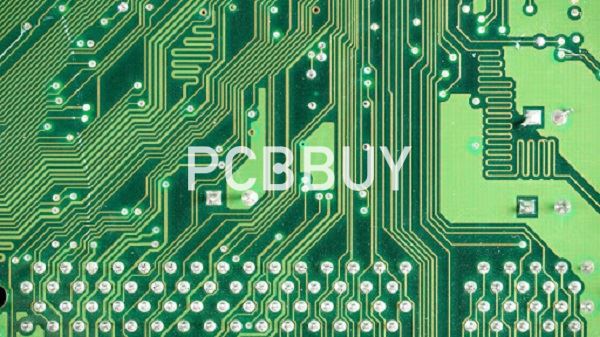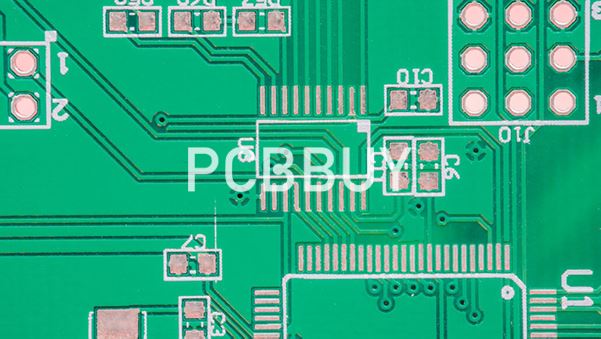Why Halogen Free PCB: 5 Reasons of PCB Material Selection Guide
By:PCBBUY 10/19/2021 09:01

We know the halogen elements refer to fluorine (F), chlorine (CL), bromine (Br), iodine (I), Atastatium (At). Because of the good flame retardancy, Cl and Br are often used in flame retardants for electronics. Most of the used circuit boards, such as FR4 PCB and CEM3 PCB, contain halogen-containing flame retardants.
Research by related institutions has shown that halogen-containing flame retardant materials emit a large amount of highly toxic gas with the unpleasant smell when burning, which not only affects the environment but also is a carcinogen to humans. In this article, we are providing you all the details about halogen-free PCB, if you are interested in the PCB material selection, please check and read the content below for more information.

1. Why we choose halogen-free PCB?
Halogen-free PCB is often mentioned when it comes to PCB manufacturing in recent years. According to the JPCA (Japan Circuit Association)-ES-01-2003 standard: Copper-clad laminates with chlorine (Cl) and bromine (Br) content of less than 0.09% Wt (Weight-ratio), respectively, are defined as halogen-free copper-clad laminates (at the same time, CI +Br total ≤0.15% [1500PPM]). A halogen-free PCB is made by halogen-free copper-clad laminate.
One proof was that RoHS was enacted on July 1, 2006, prohibiting the use of two halogenated flame retardants: polybrominated biphenyls (PBB) and polybrominated diphenyl ethers (PBDE). And then in 2008, tetrabromobisphenol A (TBBPA) and hexabromocyclododecane (HBCD or HBCDD) were added to this list, while PBB, PBDE, and TBBPA were just right the most important flame retardants ever used in PCBs.
Currently, the inclusion of PBB and PBDE has been banned from use in electronic materials by the European Union and China. In order to achieve sustainable development, it is necessary to ban halogen.
2. What are the applications of halogen-free PCB?
If you asked most designers where halogens are found in a PCB, it is doubtful they could tell you. Halogens are usually found in brominated flame retardants (BFRs), chlorinated solvents, and polyvinyl chloride (PVC). Halogens are obviously not dangerous in every form or concentration, and it’s unlikely that you’ve ever experienced health problems from holding a PVC pipe or drinking tap water. If you were to burn that pipe and inhale the chlorine gas that is released when the plastic breaks down, that might be a different story. This is the main problem with halogens in electronics; they can be released at the end of a PCB’s lifecycle. So where exactly are halogens found in a circuit board?
As you already know, PVC is used not only for piping, but also wire insulation, so that can be a source of halogens. Chlorinated solvents can be used to clean PCBs during the manufacturing process. BFRs are used in PCB laminates to reduce the risk of the board catching fire. Now that we’ve reviewed the main sources of halogens in circuits, what should we do about it?

3. What are the advantages of halogen-free PCB?
What are the benefits of using halogen-free PCBs? First, it's important to understand that halogen is not a material in itself. It is a way to describe a class of elemental gases, including fluorine, chlorine, bromine, iodine and astatine. While PCBs containing halogen gases are generally safe, these elements are toxic and can cause reactions from blurred vision and nausea to difficulty breathing and a burning sensation in the eyes, nose and throat.
These PCBs don’t question health, as they don’t contain more than 1500 ppm of chlorine or bromine. When disposed of such PCBs don’t affect the environment, unlike traditional PCBs which produce dioxin, a toxic chemical, when it becomes e-waste.
4. How to design halogen-free PCB?
It should be noted that it is difficult to find a real halogen-free PCBs. There may be small amounts of halogens on the board or some compounds hidden in unexpected places. Following are examples.
· The green circuit board will not be halogen-free unless the green substrate is removed from the solder mask because the epoxy resin that helps protect the circuit board panel may contain chlorine. The halogens may also be hidden in components such as glass adhesives, wetting agents and curing agents and resin accelerators.
· It should be paid attention to the potential pitifall of halogen-free PCB materials. For example, the ratio of solder to flux will be affected in the absence of halogen, resulting in scratches.
5. How to determine halogen-free PCB?
Both halogens and halides can be found in trace amounts as impurities in many materials. The term "Halogen-Free", much like the term "Lead-free", does not necessarily indicate a complete absence of Halogens.
Therefore, upper limits for the presence of these materials have been set by the following organizations. The International Electrochemical Commission defines halogen-free as:
<900 ppm chlorine
<900 ppm bromine
<1500 ppm total halogens
IPC defines halide-free as:
< 500 ppm of a flux's solids content, as chloride (fluoride and bromide are adjusted for molecular weight difference and calculated as chloride).
A halogen is a chemical element that is found in many electronic components and is the focus of systematic regulatory elimination. In many cases there are no simple drop-in replacements for halogenated materials.
Industry Category











